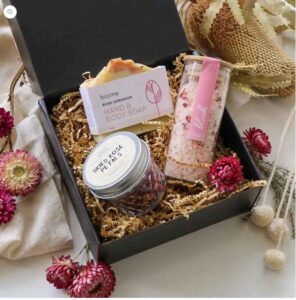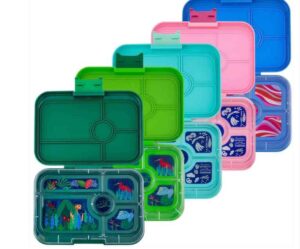How to Make your Home More Eco-Friendly
Simple and Effective Ways to Transform Your Home into an Eco-Friendly Haven

Are you looking for ways to make your home more environmentally friendly? Look no further! In this article, we will share 10 simple and effective ways to transform your home into an eco-friendly haven. From energy-efficient appliances to sustainable materials, these tips will help you reduce your carbon footprint and create a healthier living space for you and your family.
One way to make your home eco-friendlier is by investing in energy-efficient appliances. These appliances use less electricity, which not only helps the environment but also saves you money on your energy bills. Additionally, replacing traditional light bulbs with energy-efficient LED bulbs can further reduce your home’s energy consumption.
Another important aspect of creating an eco-friendly home is using sustainable materials in your renovation projects. This includes selecting flooring, furniture, and other home decor made from renewable resources or recycled materials.
By implementing these simple yet effective tips, you can transform your home into an eco-friendly haven without breaking the bank. So, let’s get started and make a positive impact on the planet, one room at a time.
Why should you transform your home into an eco-friendly haven?
Why should you transform your home into an eco-friendly haven? There are many benefits to making your living space more environmentally friendly, both for yourself and for the planet. Here are some of the reasons why you should consider going green at home:
- You can save money on your energy bills by using renewable sources of power, such as solar panels, wind turbines, or geothermal systems. These can reduce your dependence on fossil fuels and lower your carbon footprint.
- You can improve your health and well-being by creating a cleaner and safer indoor environment. By using natural materials, organic products, and non-toxic cleaners, you can avoid exposure to harmful chemicals and allergens that can cause respiratory problems, skin irritations, or other illnesses.
- You can increase the value and appeal of your property by adding eco-friendly features and upgrades. These can make your home more comfortable, efficient, and attractive to potential buyers. You can also enjoy tax credits and incentives for making green improvements to your home.
- You can contribute to the global efforts to protect the environment and combat climate change by reducing your waste, water consumption, and greenhouse gas emissions. By recycling, composting, and conserving water, you can minimize your impact on the natural resources and ecosystems that sustain life on Earth.
As you can see, transforming your home into an eco-friendly haven is not only good for the environment, but also for yourself. It can help you save money, improve your health, increase your property value, and make a positive difference in the world. So what are you waiting for? Start your green journey today and enjoy the benefits of living in harmony with nature.
Benefits of living in an eco-friendly home
Living in an eco-friendly home can have many benefits for both the environment and the residents. Eco-friendly homes are designed to minimize the negative impact on the natural resources and ecosystems, while also enhancing the health and well-being of the people who live in them. Some of the benefits of living in an eco-friendly home are:
- Reduced energy consumption and greenhouse gas emissions. Eco-friendly homes use renewable energy sources, such as solar panels, wind turbines, or geothermal systems, to generate electricity and heat. They also have high-efficiency appliances, lighting, and insulation, which reduce the amount of energy needed to maintain a comfortable temperature and perform daily tasks. By consuming less energy, eco-friendly homes contribute to lowering the carbon footprint and mitigating climate change.
- Improved indoor air quality and comfort. Eco-friendly homes use natural or low-VOC materials, such as wood, bamboo, cork, or organic cotton, to construct and furnish the interior spaces. They also have adequate ventilation, air filtration, and humidity control systems, which prevent the accumulation of dust, allergens, mould, and other pollutants that can cause respiratory problems, allergies, or asthma. By improving the indoor air quality, eco-friendly homes enhance the comfort and well-being of the residents.
- Increased property value and savings. Eco-friendly homes are attractive to potential buyers who value sustainability and environmental responsibility. They also have lower maintenance and utility costs, as they require less repairs and replacements of the systems and appliances. By increasing the property value and reducing the expenses, eco-friendly homes offer long-term financial benefits for the owners.
Reduce, reuse, recycle: The basics of eco-friendly living

One of the most effective ways to protect the environment and conserve natural resources is to follow the three R’s: reduce, reuse, and recycle. These simple actions can help us reduce the amount of waste we generate, extend the lifespan of the products we use, and recover valuable materials from items that are no longer useful. Here are some tips on how to apply the three R’s in your daily life.
Reduce: The first step is to prevent or minimize the creation of waste. This means buying less, choosing products that have less packaging, avoiding single-use or disposable items, and opting for durable and energy-efficient goods. By reducing your consumption, you can save money, save energy, and reduce greenhouse gas emissions.
Reuse: The second step is to find new ways to use or repurpose the things you already have. This means repairing or refurbishing items that are broken or worn out, donating or selling items that you no longer need, swapping or borrowing items with friends or neighbours, and using creative ideas to transform old items into new ones. By reusing your belongings, you can extend their usefulness, reduce waste, and support your local community.
Recycle: The third step is to separate and collect the materials that can be processed and made into new products. This means following the local recycling guidelines, sorting your waste into different bins or bags, taking your recyclables to a collection point or a drop-off centre, and buying products that are made from recycled materials. By recycling your waste, you can conserve natural resources, reduce pollution, and create jobs.
Energy-efficient upgrades for your home
If you want to reduce your energy bills and your environmental impact, you might consider making some energy-efficient upgrades to your home. There are many ways to improve the energy efficiency of your home, from simple changes like switching to LED light bulbs and installing smart thermostats, to more complex projects like adding insulation, replacing windows and doors, and installing solar panels or other renewable energy sources. Here are some of the benefits and costs of some common energy-efficient upgrades for your home.
- LED light bulbs: LED light bulbs use up to 80% less energy than incandescent bulbs and last up to 25 times longer. They also produce less heat, which can help reduce cooling costs in the summer. LED light bulbs are widely available and can fit most existing fixtures. The average cost of an LED bulb is about $5, and the estimated annual savings is about $75 per year for a typical household.
- Smart thermostats: Smart thermostats are devices that can automatically adjust the temperature of your home based on your preferences, schedule, and weather conditions. They can also be controlled remotely via an app or a voice assistant. Smart thermostats can help you save energy by avoiding unnecessary heating or cooling when you are away or asleep. The average cost of a smart thermostat is about $200, and the estimated annual savings is about $150 per year for a typical household.
- Insulation: Insulation is a material that reduces the heat transfer between the inside and outside of your home. It can help keep your home warmer in the winter and cooler in the summer, which can lower your heating and cooling costs. Insulation can be added to various parts of your home, such as the attic, walls, floors, and basement. The cost and savings of insulation depend on the type, amount, and location of insulation you choose. The average cost of insulation is about $1,500, and the estimated annual savings is about $600 per year for a typical household.
- Windows and doors: Windows and doors are openings that allow light and air into your home, but they can also be sources of heat loss or gain. Replacing old or inefficient windows and doors with new ones that have better insulation, sealing, and glazing can help reduce the amount of energy needed to maintain a comfortable temperature in your home. The cost and savings of windows and doors depend on the size, number, and quality of windows and doors you choose. The average cost of windows and doors is about $10,000, and the estimated annual savings is about $500 per year for a typical household.
- Solar panels: Solar panels are devices that convert sunlight into electricity that can be used to power your home or sell back to the grid. Solar panels can help you reduce or eliminate your dependence on fossil fuels and lower your carbon footprint. Solar panels can be installed on your roof or on the ground, depending on the space and orientation of your property. The cost and savings of solar panels depend on the size, number, and efficiency of solar panels you choose, as well as the local incentives and regulations. The average cost of solar panels is about $20,000, and the estimated annual savings is about $1,500 per year for a typical household.
Water conservation tips for an eco-friendly home
Water conservation is not only good for the environment, but also for your wallet. By reducing your water usage, you can save money on your water bills and help preserve the precious resource of fresh water. Here are some tips for an eco-friendly home that can help you conserve water:
- Install low-flow showerheads and faucets. These devices can reduce the amount of water you use in the shower and sink by up to 50%. They are easy to install and relatively inexpensive.
- Fix any leaks in your pipes, faucets, toilets, or appliances. Leaks can waste a lot of water over time, so it is important to fix them as soon as possible. You can check for leaks by monitoring your water meter or looking for signs of moisture or mould.
- Use a dishwasher and a washing machine only when they are full. Running these appliances with partial loads can waste a lot of water and energy. You can also choose the shortest or most efficient cycle settings to save more water.
- Collect rainwater and use it for watering plants, washing your car, or flushing your toilet. Rainwater is free and abundant, and you can store it in barrels or tanks. You can also install a rain barrel diverter to direct rainwater from your downspout to your barrel.
- Turn off the tap when you are brushing your teeth, shaving, or washing your hands. This simple habit can save up to 38 litres (10 gallons) of water per day per person. You can also use a cup or a bowl to rinse your mouth or razor instead of running the tap.
Sustainable materials and products for your home
If you are looking for ways to reduce your environmental impact and create a healthier living space, you might want to consider using sustainable materials and products for your home. Sustainable materials are those that are derived from renewable, recycled, or natural sources, and have a low embodied energy, meaning they require less energy to produce and transport. Sustainable products are those that are designed to last longer, consume less energy and water, and minimize waste and pollution.
Some examples of sustainable materials and products for your home are:
- Bamboo: Bamboo is a fast-growing grass that can be harvested without killing the plant. It is strong, durable, and versatile, and can be used for flooring, furniture, cabinets, and more. Bamboo is also biodegradable and naturally resistant to pests and fungi.
- Cork: Cork is harvested from the bark of cork oak trees, which regrow their bark every nine years. Cork is a natural insulator, reducing heat loss and noise transmission. It is also fire-resistant, anti-microbial, and hypoallergenic. Cork can be used for flooring, wall tiles, bulletin boards, and more.
- Recycled glass: Recycled glass is made from waste glass that is melted and reshaped into new products. Recycled glass reduces the need for mining new raw materials and saves energy and water in the production process. Recycled glass can be used for countertops, tiles, backsplashes, lighting fixtures, and more.
- LED lighting: LED (light-emitting diode) lighting is a type of energy-efficient lighting that uses less electricity and lasts longer than conventional incandescent or fluorescent bulbs. LED lighting also produces less heat and emits less carbon dioxide and mercury. LED lighting can be used for indoor and outdoor lighting, as well as decorative purposes.
- Low-flow fixtures: Low-flow fixtures are devices that reduce the amount of water used in faucets, showers, toilets, and other appliances. Low-flow fixtures can save water and money on utility bills, as well as reduce the strain on water resources and sewage systems. Low-flow fixtures can be easily installed or retrofitted in most homes.
Indoor air quality and green cleaning solutions

Indoor air quality is an important factor for the health and well-being of people who live or work in buildings. Poor indoor air quality can cause or worsen respiratory problems, allergies, asthma, headaches, fatigue, and other symptoms. One of the main sources of indoor air pollution is the use of conventional cleaning products, which often contain harsh chemicals that emit volatile organic compounds (VOCs) into the air. These VOCs can irritate the eyes, nose, throat, and lungs, and some of them are known or suspected carcinogens.
Green cleaning solutions are alternatives to conventional cleaning products that are safer for human health and the environment. Green cleaning solutions use natural or biodegradable ingredients, such as vinegar, baking soda, lemon juice, hydrogen peroxide, and essential oils. These ingredients can effectively clean and disinfect surfaces, remove stains and odours, and prevent mould and mildew growth. Green cleaning solutions also reduce the amount of waste and pollution generated by the production, packaging, and disposal of conventional cleaning products.
Using green cleaning solutions can improve indoor air quality by reducing the exposure to harmful chemicals and VOCs. Green cleaning solutions can also save money, as they are often cheaper or can be made at home with common household items. Green cleaning solutions can also enhance the aesthetic and sensory appeal of indoor spaces, as they leave behind a pleasant natural fragrance instead of a strong chemical smell. By choosing green cleaning solutions, people can create a healthier, cleaner, and greener indoor environment for themselves and others.
Creating a sustainable garden or outdoor space
Creating a sustainable garden or outdoor space is a rewarding way to enhance the beauty and functionality of your home, while also contributing to the conservation of natural resources and biodiversity. A sustainable garden or outdoor space is one that minimizes the negative environmental impacts of its design, construction, and maintenance, such as water use, energy consumption, waste generation, and greenhouse gas emissions. Some of the benefits of creating a sustainable garden or outdoor space include:
- Saving money on water and energy bills by using efficient irrigation systems, solar-powered lighting, and native plants that require less water and fertilizer.
- Improving the health and well-being of yourself and your family by providing a relaxing and enjoyable place to spend time outdoors, as well as reducing exposure to harmful chemicals and pollutants.
- Enhancing the aesthetic appeal and value of your property by creating a unique and attractive landscape that reflects your personal style and preferences.
- Supporting the local ecosystem and wildlife by providing habitat, food, and shelter for birds, butterflies, bees, and other beneficial insects and animals.
To create a sustainable garden or outdoor space, you need to consider several factors, such as the size, shape, orientation, and location of your site; the climate and weather conditions; the soil type and quality; the existing vegetation and structures; and your budget and goals. You also need to plan ahead and research the best practices and materials for your project, such as choosing plants that are suitable for your region and site conditions; using recycled, reclaimed, or renewable materials; avoiding invasive or exotic species; minimizing the use of pesticides and herbicides; implementing water-saving techniques such as rain barrels, drip irrigation, or xeriscaping; incorporating composting, mulching, or vermiculture to improve soil health and reduce waste; and selecting energy-efficient lighting and appliances. By following these steps, you can create a sustainable garden or outdoor space that will bring you joy and satisfaction for years to come.
Eco-friendly home decor and furnishings
Eco-friendly home decor and furnishings are a great way to reduce your environmental impact and create a healthier living space. Eco-friendly products are made from natural, renewable, recycled, or biodegradable materials that minimize waste, pollution, and carbon emissions. They also tend to last longer and require less maintenance than conventional products, saving you money and resources in the long run.
Some examples of eco-friendly home decor and furnishings are:
- Bamboo furniture: Bamboo is a fast-growing grass that can be harvested without harming the soil or the environment. Bamboo furniture is durable, lightweight, and stylish, and can be used for indoor or outdoor settings.
- Organic cotton bedding: Organic cotton is grown without the use of pesticides, synthetic fertilizers, or genetically modified seeds, which reduces water consumption and soil erosion. Organic cotton bedding is soft, breathable, and hypoallergenic, and can be dyed with natural or low-impact dyes.
- Cork flooring: Cork is a renewable material that comes from the bark of cork oak trees, which can be harvested every nine years without killing the tree. Cork flooring is resilient, insulating, and sound-absorbing, and can be finished with natural or low-VOC sealants.
- Hemp curtains: Hemp is a versatile plant that can be used for fabric, paper, food, and fuel. Hemp curtains are eco-friendly because they are made from a renewable resource that requires less water and land than cotton. Hemp curtains are also durable, UV-resistant, and antimicrobial.
- Recycled glassware: Recycled glassware is made from old bottles, jars, or windows that are melted down and reshaped into new products. Recycled glassware is eco-friendly because it reduces the amount of glass that ends up in landfills or oceans. Recycled glassware is also beautiful, colourful, and unique.
Conclusion: Embracing an eco-friendly lifestyle at home
In summary, there are many benefits of adopting an eco-friendly lifestyle at home, both for the environment and for ourselves. By making simple changes such as using renewable energy sources, reducing waste, recycling, composting, and choosing organic products, we can contribute to the preservation of natural resources, the reduction of greenhouse gas emissions, and the improvement of our health and well-being. Moreover, we can inspire others to follow our example and create a positive impact in our communities and beyond. Therefore, embracing an eco-friendly lifestyle at home is not only a moral duty, but also a smart and rewarding choice.
